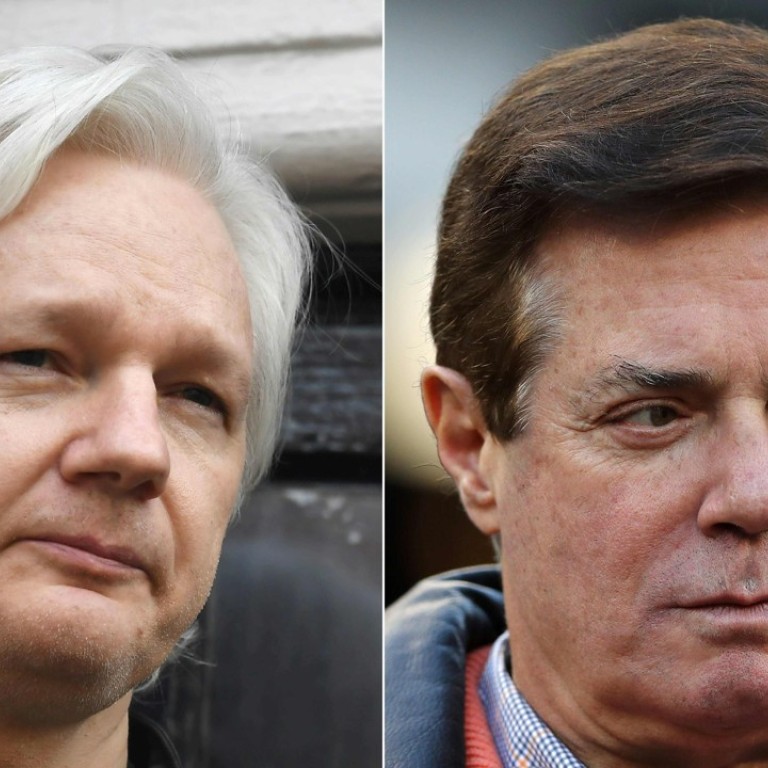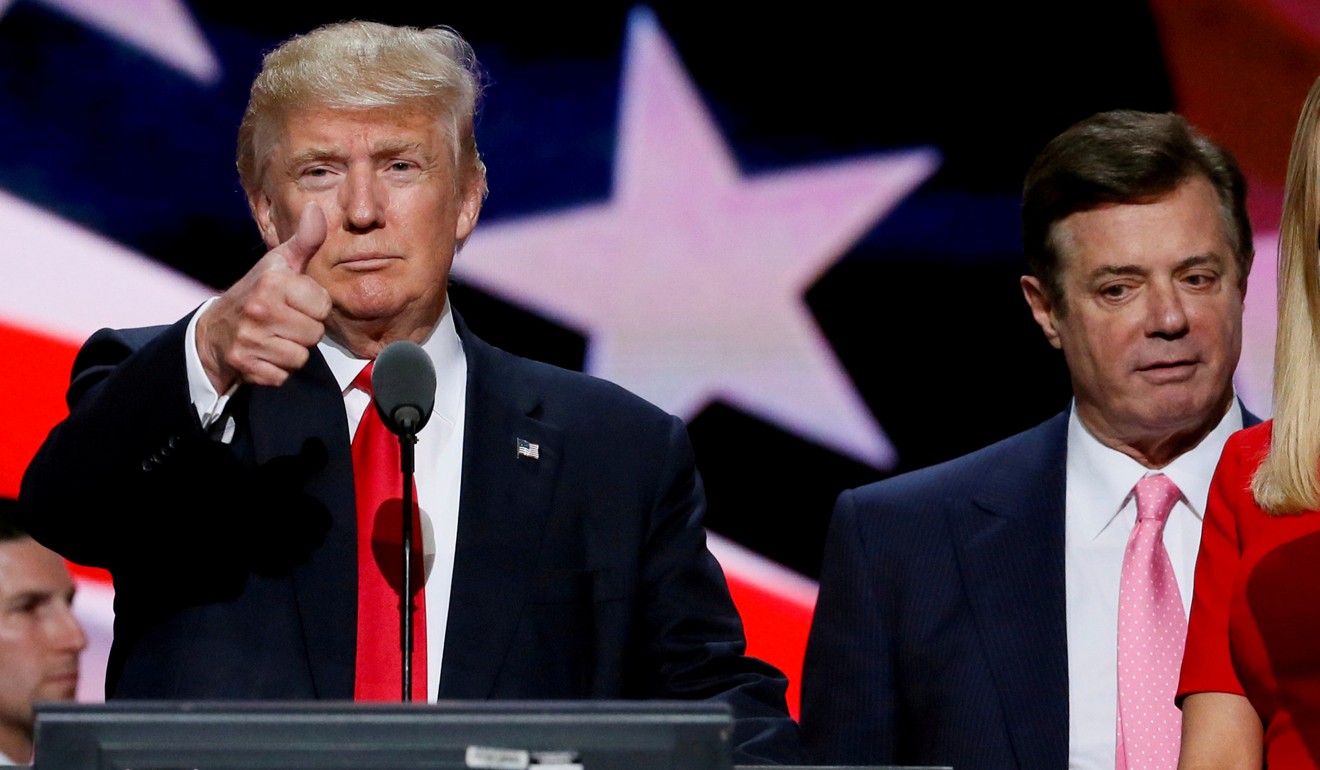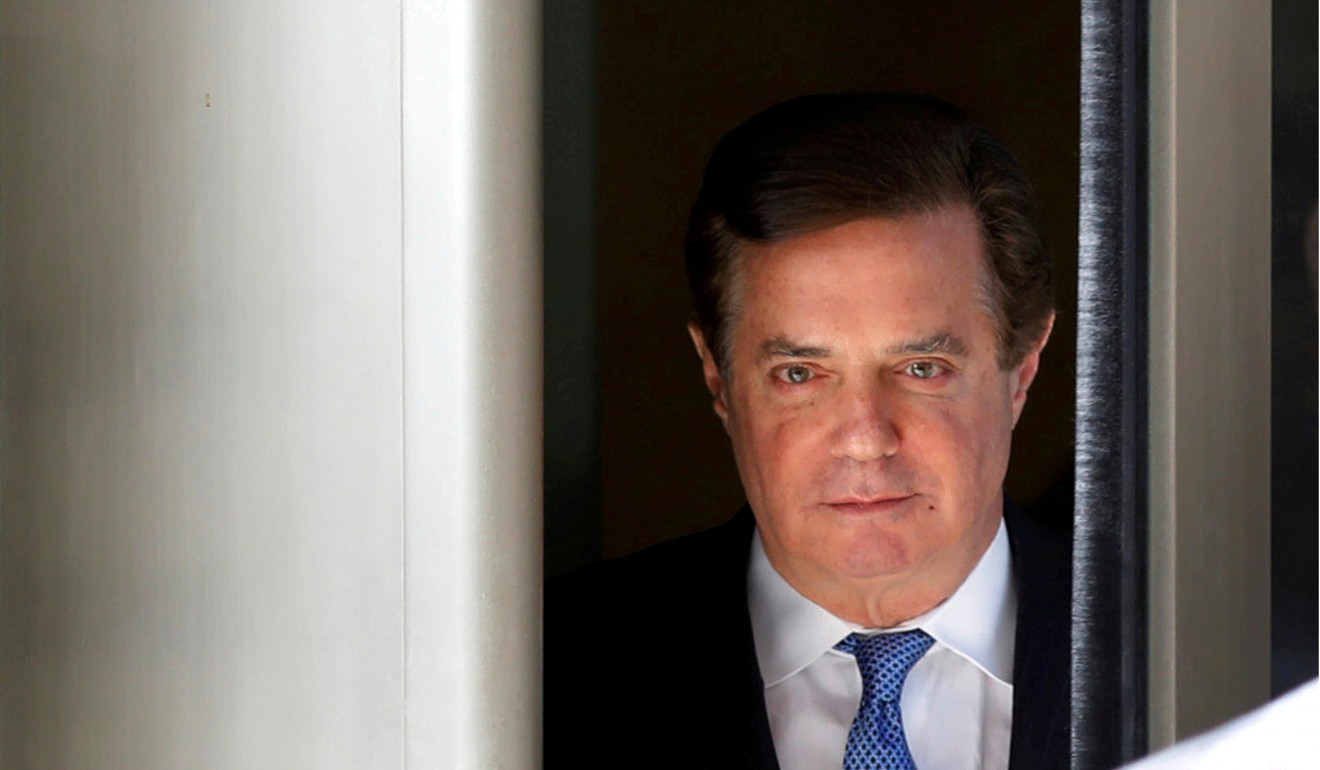
Trump campaign boss Paul Manafort held secret talks with WikiLeaks’ Julian Assange in Ecuadorean embassy
- Sources say Paul Manafort visited Julian Assange three times, before WikiLeaks released a stash of Democratic Party emails stolen by Russian spies
- A list compiled by Ecuador’s intelligence agency lists ‘Paul Manaford’ and ‘Russians’ among Assange’s visitors
Donald Trump’s former campaign manager Paul Manafort held secret talks with Julian Assange inside the Ecuadorean embassy in London, and visited around the time he joined Trump’s campaign, The Guardian has been told.
Sources have said Manafort went to see Assange in 2013, 2015 and in spring 2016 – during the period when he was made a key figure in Trump’s push for the White House.
It is unclear why Manafort wanted to see Assange and what was discussed. But the last meeting is likely to come under scrutiny and could interest Robert Mueller, the special prosecutor who is investigating possible collusion between the Trump campaign and Russia.
A well-placed source has told The Guardian that Manafort went to see Assange around March 2016. Months later WikiLeaks released a stash of Democratic National Committee (DNC) emails stolen by Russian intelligence officers.
Ex-Trump campaign chairman Paul Manafort violated plea deal by lying to FBI in Russia probe, US prosecutors say
Manafort, 69, denies involvement in the hack and says the claim is “100 per cent false”. His lawyers declined to answer The Guardian’s questions about the visits.
Manafort was jailed this year and was thought to have become a star witness in the Mueller inquiry. But on Monday Mueller said Manafort had repeatedly lied to the FBI, despite agreeing to cooperate two months ago in a plea deal. According to a court document, Manafort had committed “crimes and lies” on a “variety of subject matters”.

His defence team says Manafort believes what he has told Mueller to be truthful and has not violated his deal.
Manafort’s first visit to the embassy took place a year after Assange sought asylum inside the embassy in 2012, two sources said.
Former Trump aide Paul Manafort has agreed to cooperate with investigators – what might he know?
A separate internal document written by Ecuador’s Senain intelligence agency and seen by The Guardian lists “Paul Manaford [sic]” as one of several well-known guests. It also mentions “Russians”.
According to two sources, Manafort returned to the embassy in 2015. He paid another visit in spring 2016, turning up alone, around the time Trump named him as his convention manager. That visit is tentatively dated to March.
Manafort’s 2016 visit to Assange lasted about 40 minutes, one source said, adding that the American was casually dressed when he exited the embassy, wearing sandy-coloured chinos, a cardigan and a light-coloured shirt.
Trump torches Cohen and smothers Manafort with praise
Visitors normally register with embassy security guards and show their passports. Sources in Ecuador, however, say that Manafort was not logged.

Embassy staff were aware only later of the potential significance of Manafort’s visit and his political role with Trump, it is understood.
The revelation could shed new light on the sequence of events in the run-up to summer 2016, when WikiLeaks published tens of thousands of emails hacked by the GRU, Russia’s military intelligence agency. Hillary Clinton has said that the hack contributed to her defeat.
The previously unreported Manafort-Assange connection is likely to be of interest to Mueller, who has been investigating possible contacts between WikiLeaks and associates of Trump, including Donald Trump Jnr and the political lobbyist Roger Stone.
Escort says oligarch has tapes on Russian interference in US election
One key question is when the Trump campaign was aware of the Kremlin’s hacking operation – and what, if anything, it did to encourage it. Trump has repeatedly denied collusion.
Earlier this year Mueller indicted 12 GRU intelligence officers for carrying out the hack, which began in March 2016.
In June of that year WikiLeaks emailed the GRU via an intermediary seeking the DNC material. After failed attempts, Vladimir Putin’s spies sent the documents in mid-July to WikiLeaks as an encrypted attachment.
According to sources, Manafort’s acquaintance with Assange goes back at least five years, to late 2012 or 2013, when the American was working in Ukraine and advising its Moscow-friendly president, Viktor Yanukovych.

Why Manafort sought out Assange in 2013 is unclear. During this period Manafort was involved in black operations against Yanukovych’s chief political rival, Yulia Tymoshenko, whom Yanukovych had jailed. Manafort ran an extensive lobbying operation featuring European former politicians.
He flew frequently from the US to Ukraine’s capital, Kiev – usually via Frankfurt but sometimes through London, flight records seen by The Guardian show.
Manafort is now in jail in Alexandria, Virginia. In August a jury convicted him of crimes arising from his decade-long activities in Ukraine. They include large-scale money laundering and failure to pay US tax. Manafort pleaded guilty to further charges in order to avoid a second trial in Washington.
‘Secret life’: Rick Gates forced to reveal affair, as Manafort’s lawyers hammer at his credibility
As well as accusing him of lying, the special counsel on Monday moved to set a date for Manafort to be sentenced.
One person familiar with WikiLeaks said that Assange was motivated to damage the Democrats’ campaign because he believed a Trump administration would be less likely to seek his extradition on possible charges of espionage. This fate had hung over Assange since 2010, when he released confidential US State Department cables. That release contributed to his decision to take refuge in the Ecuadorean embassy.
According to the dossier written by the former MI6 officer Christopher Steele, Manafort was at the centre of a “well-developed conspiracy of cooperation” between the Trump campaign and Russia’s leadership. The two sides had a mutual interest in defeating Clinton, Steele wrote, whom Putin “hated and feared”.
In a memo written soon after the DNC emails were published, Steele said: “The [hacking] operation had been conducted with the full knowledge and support of Trump and senior members of his campaign team.”
As a candidate Trump warmly welcomed the dump of DNC emails by Assange. In October 2016 he declared: “I love WikiLeaks.” Trump’s comments came after WikiLeaks released a second tranche of emails seized from the email account of John Podesta, Clinton’s campaign chairman.
The Trump White House subsequently sent out mixed messages about Assange and his legal fate. In 2017 and behind the scenes Assange tried to reach a deal with the US Department of Justice that might see him avoid US prison.
In May 2017, Manafort flew to Ecuador to hold talks with the country’s president-elect Lenín Moreno. The discussions – days before Moreno was sworn in, and before Manafort was indicted – were ostensibly about a large-scale Chinese investment.
However, one source in Quito suggests that Manafort also discreetly raised Assange’s plight. Another senior foreign ministry source said he was sceptical that Assange was mentioned. At the time Moreno was expected to continue support for him.
Last week a court filing released in error suggested that the US Justice Department had secretly charged Assange with a criminal offence. Written by the assistant US attorney, Kellen Dwyer, the document did not say what Assange had been charged with or when the alleged offence took place.

